Testing Commercial and DIY Wireless Signal Blockers with Faraday Bags
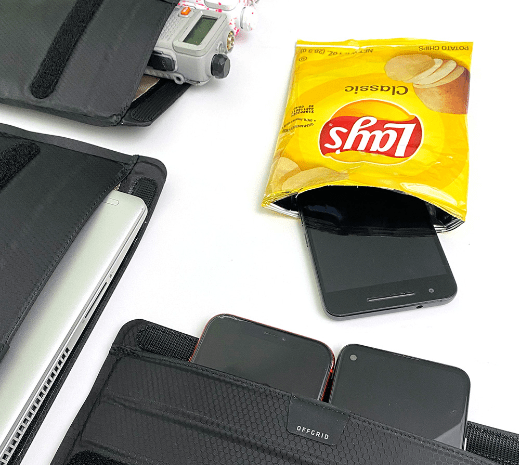
A Faraday bag has the ability to protect your sensitive electronic devices from Wi-Fi, Bluetooth, GPS, cellular, radio, and other types of signals by creating a shield around them.
The early 1800s saw English scientist Michael Faraday make significant contributions to the field of electricity, including creations such as the first electrical generator and rubber balloons. A crucial discovery during his research was the Faraday cage. Faraday’s early career involved working for chemist Sir Humphry Davy, who established electrolysis as a method for isolating various elements for the first time. These pioneers were instrumental in advancing research into metals, chemistry, and electricity, and Faraday’s importance within his field was even recognized by Albert Einstein, who kept a portrait of him in his study.
Due to the dangerous nature of scientific experiments during this time, the first Faraday cage was created in 1836 to protect Michael Faraday from potential harm. Inside this protective test lab, Faraday demonstrated that there was no electrical charge present when voltage was discharged to strike the exterior of the cage.
Faraday’s groundbreaking experiment continues to impact our lives today, especially in terms of protecting ourselves from harmful microwaves while reheating food. However, it is a common misconception that a microwave can act as a Faraday cage or provide protection from an EMP attack. Microwaves are specifically designed to contain non-ionizing radio waves that heat our food and prevent radiation from escaping. For more complete and secure shielding, Faraday bags and cages are specifically crafted to prevent any leaks.
THE BASICS OF FARADAY BAGS

Faraday cages can block various types of signals from communicating with electronic devices, including RFID, FM radio, GPS, cellular, Bluetooth, and Wi-Fi — each has its own vulnerabilities, and the protection from threats can range from hacking to EMP attacks. Faraday bags offer the same benefits of rigid cages, but in a slimmer and more flexible format.
For many people, the threat of losing the ability to communicate with others immediately following any type of attack will warrant various forms of preparation. Pulling your cell phone out of the faraday bag immediately after any type of attack doesn’t guarantee you will have a device that’s capable of communicating with anyone. The cell and power grid could potentially have their own issues following an attack. There’s a very strong assumption that cell towers could be overloaded with traffic as well. Boston Marathon attendees experienced this failure immediately following the bombing in 2013, as did most of New York City on 9/11.
Keeping your phone or laptop data safe from cyber criminals would also be an effective use case for Faraday bags. Blocking all wireless connectivity surely keeps hackers at bay — until, of course, you want to actually use your device. Removing it from its secure storage to make or receive a call or send a text/email immediately opens the vulnerability pipeline, and leaves you open to attacks and unwanted visibility.

Above: From tin-foil wrap to snack bags to purpose-built bags, there are a number of ways to protect your devices from wireless signals.
For law enforcement, a faraday bag can prevent someone from remotely wiping a phone once it’s in custody. For criminals, a Faraday bag can block your ability to track/wipe your device if lost or stolen. The best protection is to avoid keeping any sensitive data on a portable device that would be easy to lose.
In a true disaster scenario, it would be effective to keep a radio (HAM or FRS) in a faraday bag and limit your communication window to a predetermined time of day. Don’t forget about the potential for a secondary EMP attack/blast.
USES FOR FARADAY BAGS
Here are some of the many ways you can use purpose-built or DIY faraday bags to protect your sensitive electronics and data:
1.Prevent devices from being tracked by GPS or third-party apps
2.Block hackers from wirelessly accessing your devices
3.Insulate devices from signal interference or EMPs
4.Go off-grid by instantly disabling all incoming calls and texts to your cell phone
5.Shield your car key fob to temporarily shut off keyless entry/ignition
6.Protect RFID cards from replication attacks (credit/debit cards, hotel keys, door access keys)
EDEC OFFGRID SERIES FARADAY BAGS
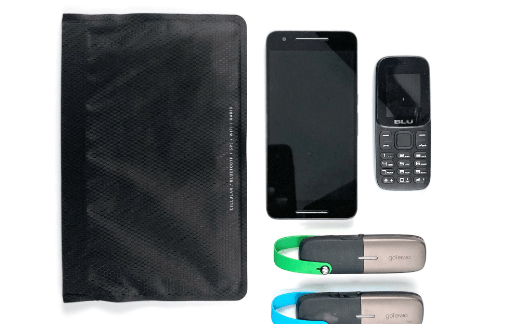
Above: The EDEC OffGrid bags come in various sizes to shield an array of different devices.
With all this in mind, we did some testing on the OffGrid Series of Faraday bags produced by EDEC (not affiliated with OFFGRID magazine, the shared name is a coincidence). Most other faraday bag companies put two sheets of faraday material in their bags and call it “multi-layered.” Faraday fabric is expensive but skimping on material can lead to reduced effectiveness and lower durability. The EDEC OffGrid bags are lined with four layers of faraday material to provide ultimate shielding. The innermost layer is “diamond-grade” faraday fabric, which is extra-durable to prevent scratches when inserting or removing devices from the bag. This ensures the longevity of the product.
Specifications
OffGrid Faraday Bag by EDEC Digital Forensics
Sizes
Key Fob (4” x 6.9”) / Mobile (8” x 9.4”) / Tablet (8.6” x 14”) / Laptop (13.4” x 20.8”)
Colors
Black, Gray
MSRP
$25 to $130
The Faraday bag is crafted using lightweight ripstop fabric, which not only gives it a fashionable and sporty appearance but also makes it water-resistant. To prevent any signal leakage, the ripstop material is held together using thermo-welded seams instead of traditional stitching. The bag is equipped with a secure closure mechanism that combines magnets and Velcro to ensure the opening stays firmly shut, thereby preventing any potential gaps in the Faraday material that could lead to signal leaks.
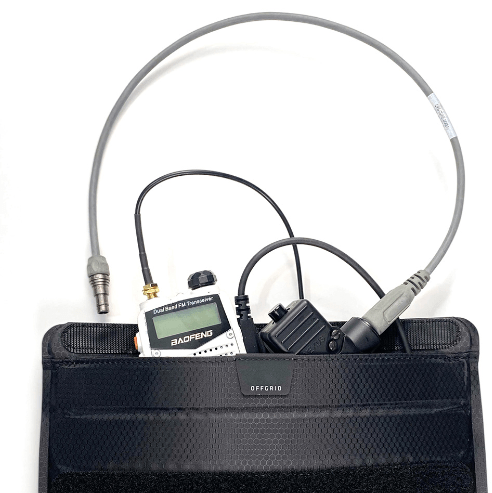
In order to gauge the capabilities of the EDEC bag, we compared it to our own improvised faraday bags, made of hand-wrapped aluminum foil and potato chip bags. Both have been shown in movies and on TV as signal blockers. They’re easy to source in any grocery store or gas station bodega but can be effective ways to quickly provide some signal blocking. These options should be considered a “last resort” if shielding is important to you.
FARADAY BAG TESTING PROCEDURE & RESULTS
To verify their effectiveness in blocking signals, we tested both EDEC and DIY Faraday bags against six different types of frequencies: RFID, FM radio, GPS, cellular, Bluetooth, and Wi-Fi. Our testing involved an Apple iPhone, a Google Pixel 4a, a portable radio, and a Proxmark 3 RDV4 device that was used to test the Faraday bags’ ability to block RFID signals from a hotel card and an ATM debit Mastercard.
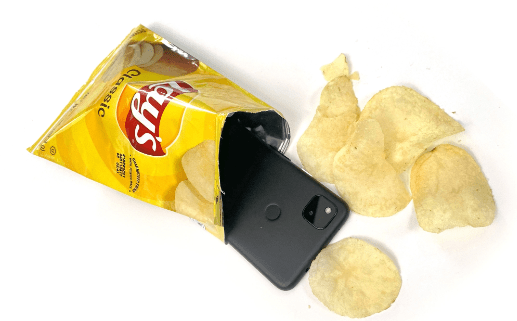
Above: While foil chip bags aren’t totally ineffective, they’re far from ideal.
The EDEC Faraday Bag passed our tests with flying colors, providing complete shielding against all six signal types.
As for the DIY folded foil method, we found that three layers needed to be folded around the device to provide adequate Wi-Fi signal blocking. We accomplished this by using one large sheet to wrap all the way around the device, with all overhang layers folded over onto themselves. Doing this three times is key to getting the correct seal.
We tested a foil-lined chip bag and found that it successfully blocked cellular and GPS signals, but its shielding failed to prevent Wi-Fi signals from penetrating through. However, we found that folding the bag twice and using a chip clip was an effective way to block both cellular and GPS signals. It’s possible that using multiple bags may work just as well as multiple layers of regular foil, but unless you consume a large quantity of potato chips in various bag sizes, it may not be a practical solution.
CLOSING THOUGHTS
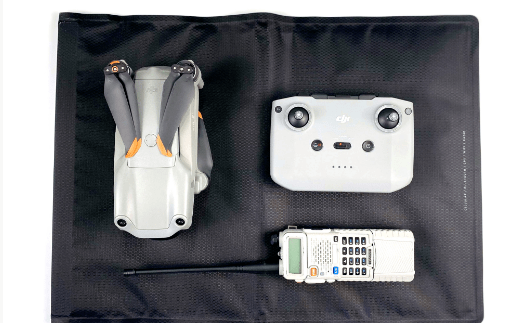
Discovering innovative ways to use outdated technology is always an intriguing pursuit. Our objective is to examine diverse situations and determine the most efficient method for utilizing the resources at our disposal. Even though Faraday bags are not a novel concept, their significance has grown in our modern era of constant wireless connectivity. When you require assurance that you are disconnected from the grid, using a DIY or pre-made Faraday bag to shield your devices can be extremely helpful.








